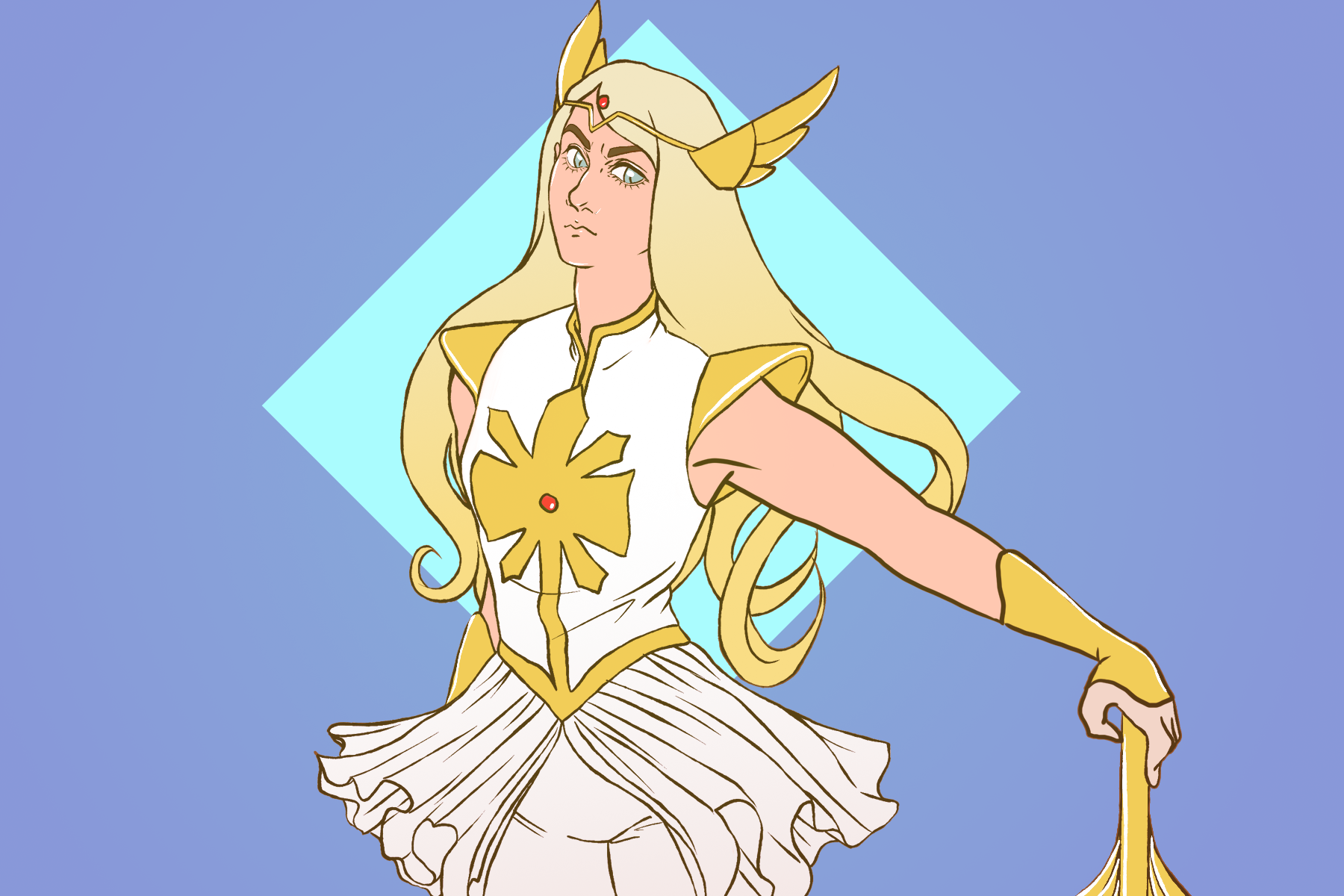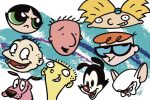It can be hard for LGBTQ+ people to find positive representation in media. Significant strides have been made in recent years — GLAAD identified a record 8.8% of “characters expected to appear on broadcast scripted primetime programming” in 2018 as explicitly LGBTQ+ — but in programming for children, main characters who identify as gay, trans, bisexual or queer are few and far between. However, the upward trend of LGBTQ+ characters in media is impacting shows for younger audiences, especially when the show is animated. These three shows are at the forefront of LGBTQ+ representation in animation, with one or more prominent characters being open about their identity.
1. She-Ra: Princesses of Power
This Netflix original is one of the best examples of LGBTQ+ representation in animation. At a New York Comic Con prior to the release of the show, Aimee Carrero let slip that one of the main characters would have two fathers. Carrero, who voices She-Ra, may have let that tidbit slip but there are many more LGBTQ+ characters besides those two. In the Season 1 finale, the princesses Spinnerella and Netossa hold hands and hug after a battle. In the fourth episode of Season 3, a locker is opened that contains a picture of a boy named Kyle with a heart on it. Other evidence in the locker confirms that it belongs to Rogelio, another male character; the two are often seen interacting in the background of scenes and are almost inseparable.
What separates “She-Ra” from some other shows is the seamless integration of its LGBTQ+ characters. Spinnerella and Netossa have had their moments to shine, but their relationship is treated like any other. Kyle and Rogelio’s relationship develops over the seasons through references and shots in the background, and even though it hasn’t been confirmed explicitly on the show itself, the evidence isn’t hidden — and fans are free to run wild with speculation.
And, in a progressive move, an openly nonbinary character named Double Trouble will appear in the show’s fourth season — voiced by a nonbinary performer to boot. As rare as LGBTQ+ representation is in children’s media, trans and nonbinary representation is especially uncommon. “She-Ra” has curated a diverse cast of characters so far and will continue to do so as long as the creators maintain their forward-thinking mindsets.
After Queen Angella's heroic sacrifice, it's Glimmer's time to take the throne. But with Horde Prime's arrival looming, the princesses begin to lose grip. The all new season of #SheRa and the Princesses of Power comes to @Netflix 11/5! #SheRa pic.twitter.com/b8HYWiwmJ0
— She-Ra and the Princesses of Power (@DreamWorksSheRa) October 24, 2019
2. Rocko’s Modern Life
“Rocko’s Modern Life” aired on Nickelodeon from 1992 to 1996 and was notorious for breaking the boundaries of what is considered acceptable in an animated show. Many of the show’s racier scenes were censored on the network for years — so given the producers’ willingness to tiptoe the edge of socially acceptable topics, it makes sense that a transgender character might appear in the show’s 2019 Netflix special, “Static Cling.”
A 1996 episode of the show focused on the character of Ed Bighead, who had a secret passion for dressing up and performing as a clown, despite his town’s general antipathy toward clowns. Through conversations with his family and the other members of his community, Ed realizes that having interests that others don’t understand or appreciate isn’t necessarily a bad thing. This allegory for being a closeted gay man was all that the writers of the show could get away with at the time, but they were finally able to be vocal about their LGBTQ+ positive intentions earlier this year.
Rachel Bighead, the daughter of Ed, reveals her new name and identity to the main characters Rocko, Heffer and Filburt after the trio had been stranded in space for 20 years. They immediately accept their friend and her gender identity and continue along their journey as planned, as if 20 years had hardly gone by. Rachel’s father needs some time before fully accepting his daughter, but sure enough, the family is reunited by the end of the 45-minute special.
LGBTQ+ representation that includes a positive family reaction can do a lot to encourage kids questioning their identities to talk to their families about it and build a support system early on. Hopefully, seeing a fan-favorite character like Rachel can encourage longtime “Rocko” fans to be more open and understanding as well. Additionally, even though there has been no confirmation of a continuing “Rocko” series after “Static Cling,” given the positive reception of the special and support from Netflix, it’s not impossible that fans will be seeing more of Rocko and Rachel in the future.
Steven Universe
This highly-acclaimed Cartoon Network series has LGBTQ+ representation written into the show’s bones. The creator and executive producer of “Steven Universe,” Rebecca Sugar, is a bisexual nonbinary woman. When she started working on “Steven Universe,” she was not yet out to her friends and family; through working on the show, she realized that she could be open about her identity and subsequently came out of the closet. In an interview with the Los Angeles Times, Sugar described the concept of characters called “Off Colors” who are shunned for their differences. She said that the characters “associate [being visible] with being treated horribly, which is something that I think is very real.” That’s yet another reason for Sugar to present children questioning their identities with positive role models.
New epilogue limited series “Steven Universe Future” coming soon to #CartoonNetwork
The future is bright 🌟🖤
#StevenUniverse #StevenUniverseFuture #BelieveInSteven #TheFutureIsBright pic.twitter.com/nQzJWPFLXR— Cartoon Network (@cartoonnetwork) October 4, 2019
When it comes to the characters, there is no tiptoeing around romantic attraction. Garnet, one of the show’s main characters, is a “fusion” of two lesbian characters, Ruby and Sapphire. Ruby and Sapphire have a deep bond that allows them to come together as one being, Garnet; in fact, the fifth season of “Steven Universe” dedicated an episode to their marriage, which was the first ever same-sex marriage featured on a kids show.
Another main female character, Pearl, is portrayed throughout the show as having a romantic crush on Rose Quartz, another female character; Rose herself is explicitly bisexual. Steven Universe is born after a romantic relationship between Rose and Greg Universe. Additionally, Steven can “fuse” with another character, Connie, and become an entirely separate character called Stevonnie. Stevonnie is referred to with singular “they” pronouns, and is described as neither male nor female. The sheer amount of LGBTQ+ representation in the show, especially among the primary characters, sets it apart from every one of its contemporaries.
Animation is a powerful medium that offers creators infinite freedom in what they want to present. When they choose to present a diverse cast of characters in unique situations, the positive impact on underrepresented viewers can’t be overstated. Even though children’s animation is still working on improving its representation, massive strides have been taken in recent years, and hopefully this trend continues long into the future.
















